Are you in desperate need of a new strategy to boost sales?
Before you start designing a marketing campaign, take a moment to consider this.
Only 3% of your audience is ready to buy your products right now. About 17% of them are in the process of gathering general information, and 20% are aware they have a problem but are not actively seeking solutions. Then there is the 60% of customers that aren't even aware they have an issue that needs resolving.
Most ecommerce business owners fixate on the 3%. But you should really focus your attention on those in the "problem-aware" or "information-gathering" stages. Then, you want to guide these prospects down a sales funnel, nurturing them until they are ready to purchase.
So, how do you achieve this goal?
In this article, we'll take you through the art of creating a sales funnel. A strategy that educates your audience and moves them steadily toward becoming buyers. We'll also explore the potential of building and leveraging your email list, allowing you to communicate directly with your audience without spending extra on ads.
Prepare to discover how a well-crafted sales funnel can transform casual visitors into loyal customers in a matter of weeks.
Step 1: Knowing Your Customer Intimately
The first and most crucial step is getting to know your customers like the back of your hand. It goes beyond demographic data like age, gender and location. If you genuinely want to connect with your audience and tailor your message to their unique wants and needs, you need to dive deeper.
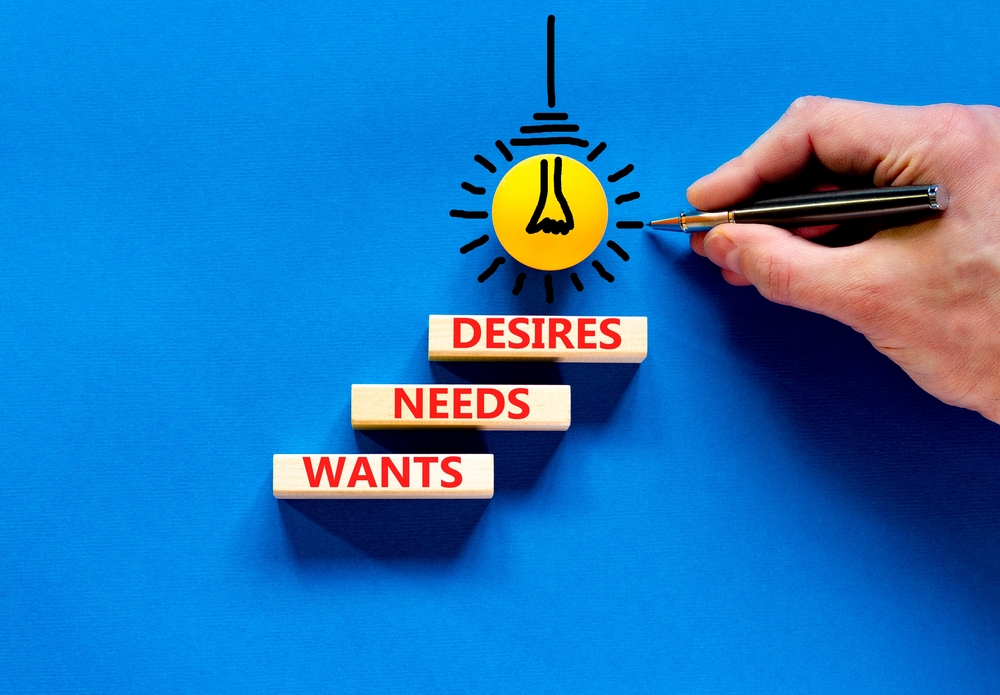
How to Go Beyond Demographics
Demographics provide just the tip of the iceberg. To create a compelling conversion funnel, you must uncover your target audience's passions, interests and beliefs.
You need to step into the shoes of your customers. You can do this easily by reading their comments on competitor products, exploring related blogs, diving into YouTube comment sections, and immersing yourself in the social media channels they follow. Here, you'll learn their emotional triggers and begin to understand them intimately.
Study the Words They Use
While studying your dream buyers, pay special attention to the language, tone and voice they use so you can adopt the words that resonate with them into your sales funnel.
Understanding what makes them happy, frustrated, and concerned will allow you to categorise this information into sections addressing their pain points, desires, objections, and more.
Unlock Insights with SEO
Don't underestimate the power of search engine optimisation. Conducting a thorough keyword search can reveal a treasure trove of insights.
You can explore the terms your customers are searching for while exploring your target audience's interests and concerns. Pay close attention to the “People Also Ask” section. It displays all the questions your buyers are typing into Google about your product or niche.
Ask the Right Questions
To truly gain a comprehensive understanding of your customers, ask yourself these vital questions:
- What problems does your product solve?
- What pain points or challenges does it address?
- What is the age range and gender of your ideal customer?
- What's their income level, and where do they live?
- What are your customers’ interests, values and beliefs?
- Who are the brands or influencers they resonate with?
- Where do they spend their time online? Is it on social media, websites, forums or communities?
- What drives their buying behaviour? Is it impulsiveness or thorough research?
- Are they price-sensitive or value-driven consumers?
- What has stopped them from solving their problem up until now?
- What language, words, or phrases do they commonly use when discussing the issue you solve?
- Who have they purchased from before, and what were their experiences?
- How do they prefer to be communicated with in terms of content format and frequency?
- What objections might they have when considering your product over competitors?
Step 2: Crafting Your High-Value Lead Magnet - Top of the Funnel
Now you have a better idea of your audience, it's time to create something that draws them in. A lead magnet is exactly what you need. It can capture your audience's attention and initiate a valuable connection.
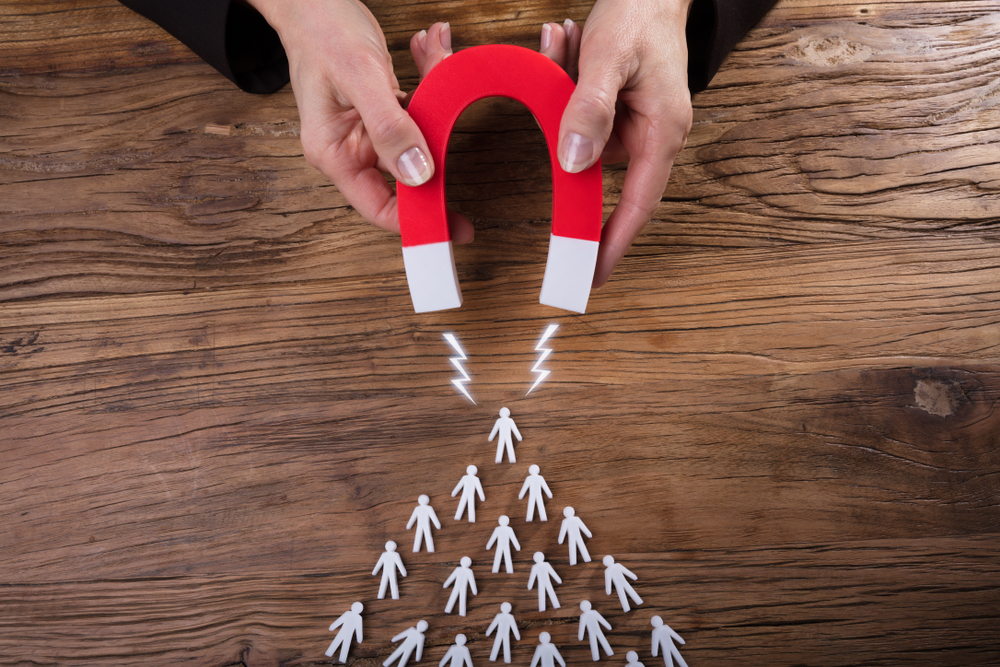
What is a Lead Magnet?
A lead magnet is an offering or gift you provide in exchange for your prospect's contact information, typically their email address.
The purpose of a lead magnet is to attract targeted leads, which you can nurture toward your primary offering at the bottom of the sales funnel.
What Are Some Examples of Lead Magnets?
Lead magnets come in various forms. Each one is designed to address your audience's specific needs and preferences.
- Exclusive discount codes
- Product guides
- Early access to sales
- Loyalty programs
- Free shipping
- Ebooks
The key is to make your lead magnet highly relevant, easily consumable, and of perceived high value. It also must be instantly accessible to your audience and relevant to their interests.
How to Create an Attention-Grabbing Lead Magnet
Making an irresistible lead magnet starts with a compelling headline that speaks directly to your audience's desires or pain points. Sometimes it is both.
The remaining content also plays a vital role. It needs to be engaging, communicate value concisely, and resonate with your audience so they don’t hesitate to enter their email address.
To help you structure your lead magnet effectively, use this template:
[Benefit They Seek] + [Time Frame] + [Exclusive Offer]
Here are some examples you can try using this template:
- For a fashion ecommerce store: "Unlock Free Shipping When You Upgrade Your Wardrobe With This Season’s Hottest Items."
- For a home decor ecommerce Site: "Get Exclusive Early Access to Our Seasonal Collection with a Limited-Time 15% Discount!"
- For a tech gadgets store: "Upgrade to the Latest Model with Insider Access to Our Latest Products."
- For a beauty products online store: "Discover the Ultimate Beauty Routine with Our Personalised Guide."
Step 3: Building a Landing Page for Maximum Engagement
To convert visitors into valuable leads, you’ll need a landing page. This is the gateway to your sales funnel, and it should be carefully designed to capture attention and encourage action.
Here's an example of a landing page designed for email collection, crafted by Smart Blogger
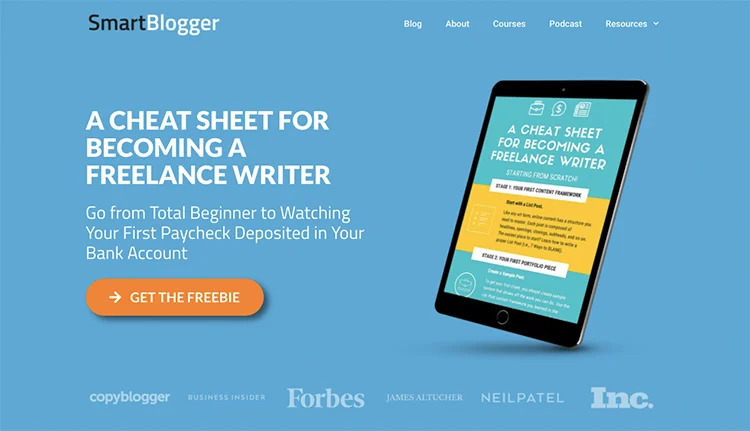
What Are the Essential Elements of a Landing Page?
An effective landing page will look different to the other parts of your website. It will still feature your branding, logo, and colour scheme. But you need to ensure it includes these vital components.
- Attention-Grabbing Headline: Your title should immediately grab your visitor's attention. It should clearly convey the primary benefit or solution your lead magnet offers.
- Benefit-Driven Subheadline: Complement your headline by providing more detail or highlighting secondary benefits.
- Clear and Concise Copy: Keep your copy straightforward. Avoid trying to be clever or salesy. Simply explain what the visitor will receive and how it will benefit them. Use bullet points to break down key takeaways of the lead magnet.
- High-Quality Imagery: Use visuals that represent what you’re offering or showcase the end result after using it. This could be an image of the ebook cover or a testimonial photo.
- Social Proof: Boost credibility and trust with testimonials, reviews, or logos of companies that have benefited from your lead magnet.
- Prominent Call-to-Action: Your call to action should be crystal clear. Phrases like "Download Now," "Get Instant Access," or "Grab Your Free Guide" are effective. Make sure the button to receive the lead magnet stands out in terms of colour and size.
- Minimal Distractions: Remove unnecessary links, menu items, or other distractions that could divert visitors away from the primary action of providing their email.
- Opt-in Form Simplicity: Keep your form short and sweet. In most cases, just requesting an email is sufficient. If more information is needed, ensure it's essential for delivering the lead magnet or segmenting your audience.
- Urgency Elements:If applicable, include elements that convey urgency. For example, it might be a limited-time offer or a specific amount of copies available. It helps to encourage immediate action.
- Mobile Optimisation: Retailbiz reports that one in four customers abandon a site because it isn’t optimised for their device. You must ensure your landing page looks and functions flawlessly, or you might not get a second chance.
- Loading Speed: Slow pages can turn visitors off. Compress your images before publishing them, and use reputable web hosts to ensure fast loading times.
- Privacy Assurance: Reassure visitors by including a brief note or link to your privacy policy. Confirm their email and personal information will be kept confidential.
- Above the Fold Content: Make sure the critical elements - headline, subheadline, CTA, and opt-in form - are visible without the need to scroll.
- Consistent Branding: Maintain a consistent look, feel, and tone on your landing page that aligns with your brand. You want a seamless experience for visitors familiar with your brand.
Recommended Software for Creating Landing Pages
If you don’t have a background in web design, there are plenty of places that can help you create an engaging landing page.
- Unbounce: Unbounce is one of the top choices among landing page builders. It features intuitive drag-and-drop editing, A/B testing capabilities, and seamless integration with popular marketing tools.
- Instapage: If speed and user-friendliness are your top priorities, Instapage is a quality option. This landing page builder offers fast performance and a hassle-free experience. It features collaborative tools and dynamic text replacement, making it a popular choice for ecommerce businesses.
- Leadpages: From attention-grabbing pop-ups to sticky bars and seamless email integrations, Leadpages is a valuable resource for lead generation campaigns.
- HubSpot Landing Pages: For businesses already utilising the platform’s marketing ecosystem, HubSpot Landing Pages is a natural extension. It offers lead scoring, email automation and A/B testing.
- Wix: While it’s already a comprehensive website builder, it extends its functionality to cover landing page creation. Wix is the go-to option for ecommerce businesses seeking an all-in-one solution.
Step 4: Nurture Your Audience - The Middle of the Funnel
Once you have collected your prospect’s email address, it's time to nurture and educate them. This stage in your sales funnel aims to build trust, demonstrate your authority, and guide your leads toward becoming loyal customers.

Leverage Email Marketing
Email marketing is your secret weapon for nurturing leads effectively. Craft a carefully planned series of emails that blend educational content, real-life testimonials, compelling case studies and gently persuasive sales pitches.
This combination will nurture your customers down the funnel until you’ve overcome enough of their objections to guide them closer to making a purchase decision.
Educate and Inform Your Audience
Your emails should not only showcase the value of your products but also address potential objections that your leads may have.
Highlight the unique benefits and differentiators of what you offer. This is the perfect opportunity to demonstrate your expertise, positioning your brand as the go-to source for solutions within your niche.
Build Trust and Authority
Trust is the cornerstone of successful ecommerce relationships. You can demonstrate reliability and transparency by consistently delivering valuable content and addressing concerns.
Building trust with your customer base is critical in the decision-making process for your potential buyers. They won’t buy from your online store if they don’t believe in you.
Get the Timing Right
Strategically time your emails to align with your audience's journey down the funnel.
As they progress, your messaging should adapt to their evolving needs and questions. Your goal is to remain a valuable resource throughout their decision-making process, from initial awareness to final purchase.
Step 5: The Conversion Phase - Bottom of the Funnel
At this stage, your carefully crafted strategy culminates in a direct offer to your well-nurtured leads. It's time to convert them into loyal customers.
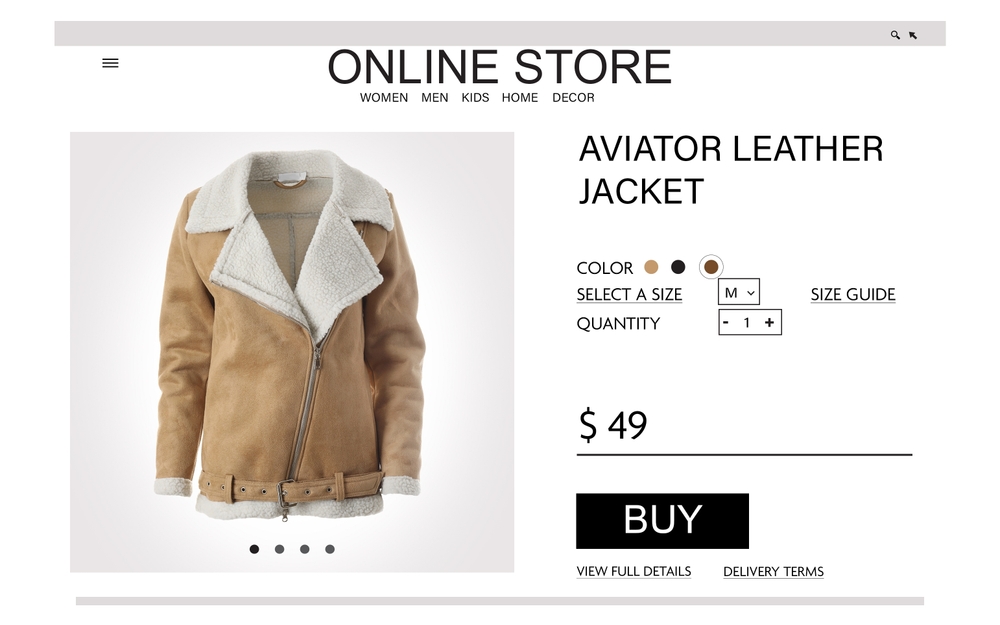
The Direct Offer
Present your leads with an offer they can’t refuse.
This could take the form of a low-ticket item known as a "tripwire," designed to introduce them to your products at a relatively low cost. Alternatively, you can make it your core offering to help seal the deal.
The Power of Persuasion
To encourage buyers to act now, utilise psychological triggers such as scarcity, urgency and social proof.
Limited-time offers, countdown timers, and testimonials from satisfied customers can be powerful motivators. The goal is to create a sense of FOMO (Fear of Missing Out) that prompts them to add the product to the cart and make a purchase.
Dedicated Landing Page
Direct your leads to a specialised landing page and provide a focused and detailed breakdown of precisely why they should make the purchase.
Address their pain points, emphasise the benefits of your product, and alleviate any lingering objections.
A landing page has the benefit of being more focused without the chance of being distracted and clicking elsewhere.
Seal the Deal
Your email marketing efforts have primed your audience for this moment. They are now well-informed and have come to trust your brand.
The conversion phase is where all that hard work pays off as they transition from interested prospects to satisfied customers.
Present them with an irresistible offer or discount, making it almost impossible for them to decline, and nudging them towards a purchase.
Step 6: Elevating the Experience with Upsells
While you might have secured the initial sale, the journey doesn't end there. The next step in optimising your sales funnel is offering complementary products to enhance your customer's experience and maximise the value they receive.

Strike While the Iron Is Hot
Immediately after your customer makes their initial purchase, present them with additional products they might be interested in.
These additional offerings should seamlessly complement their initial choice, providing enhanced value or benefits. Consider showcasing product combinations that your existing customers purchase as a way to entice them.
The Benefits of Upselling
Effective upselling not only increases your revenue but also deepens the relationship with your customers.
By offering relevant and valuable upsells you demonstrate that you genuinely care about their needs and are committed to delivering exceptional value.
Step 7: Cultivating Customer Loyalty through Retention

To ensure customers remain devoted to your brand, you must consistently deliver exceptional value, top-notch customer service, and a high quality shipping experience. Meeting and exceeding their expectation is critical to retaining their trust and loyalty.
The Power of Incentives
Consider implementing loyalty programs, exclusive deals, or memberships to keep your customers engaged and returning for more. These incentives can create a sense of belonging and reward, making customers feel appreciated and valued.
Nurturing Long-Term Relationships
Retention is about more than just keeping customers. It's about fostering long-lasting connections. These relationships can lead to repeat purchases, positive word-of-mouth referrals and a thriving community of brand advocates.
The Importance of Shipping
In the world of ecommerce, shipping isn't just a logistical necessity, it's a pivotal touchpoint in the customer journey. The way you handle shipping can significantly influence a customer's decision to shop with you again or recommend your brand to others.
- First Impressions Count: For many customers, the shipping experience is their first physical interaction with your brand. A smooth, efficient, and timely delivery can set the tone for a lasting relationship.
- Meeting Expectations: Today's consumers have high expectations. They want fast, reliable, and often free shipping. Meeting or exceeding these expectations can be the difference between a one-time purchase and a loyal customer.
- Transparency is Key: Customers appreciate being in the know. Providing clear shipping policies, tracking information, and regular updates can enhance trust and loyalty.
You can use Interparcel to make your shipping simple. All your orders can be synced to a single dashboard, with a range of competitive courier options to choose.
If you're not sure what the right courier is for your business, we have a team of shipping experts who can guide you for free. Plus, we have a Branded Tracking feature to enhance the post-purchase experience. This includes your logo, brand colours, a promotional banner, and a custom URL.
With a solid shipping strategy and post-purchase experience, you can enhance your customer's experience so they keep coming back to your store.
Step 8: The Continuous Pursuit of Optimisation
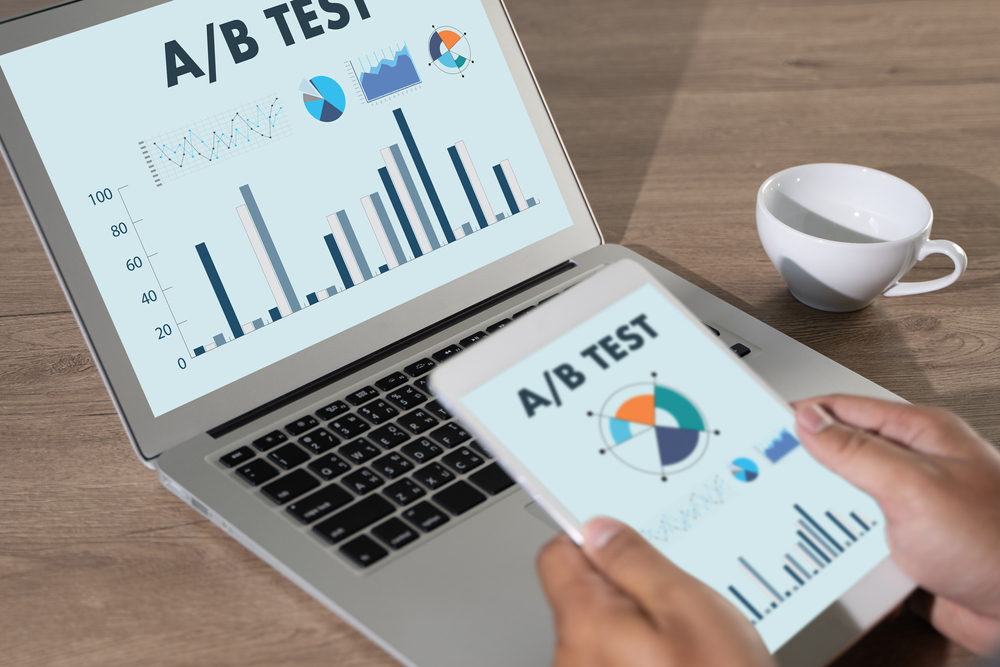
The final step of your sales funnel journey is the ongoing commitment to continuous improvement and optimisation.
"Always be testing" should be your mantra. This means conducting A/B tests on various elements of your sales funnel, including landing pages, email campaigns and ad copy. It lets you fine-tune your approach and identify what resonates most effectively with your audience.
Don’t be afraid to dive deep into the data to gain insights into buyer behaviour, conversion rates and customer satisfaction. Pay attention to what your customers are saying, both directly and indirectly, through their actions.
As you gather more data, adapt to changing trends, and evolve alongside your audience, You'll discover new opportunities to enhance your sales funnel further.
Time to Build Your First Sales Funnel
The sales funnel strategy is a cornerstone of ecommerce success. It's a roadmap that takes you from understanding your audience to turning them into loyal customers and advocates. Each step, from creating an enticing lead magnet to continuous optimisation, plays a pivotal role in shaping a thriving online store.
Apply these steps to fine-tune your strategies and forge deeper connections with your audience. Remember, a well-crafted sales funnel is not just a concept; it's a dynamic blueprint for sustainable growth. Your journey to success begins now.










 Facebook
Facebook Twitter
Twitter Instagram
Instagram Linked In
Linked In YouTube
YouTube